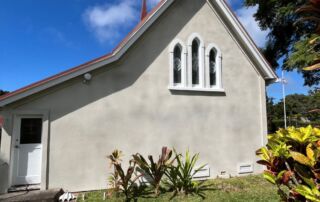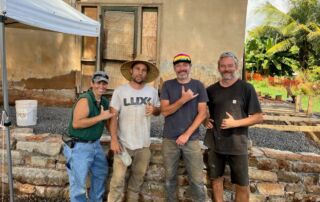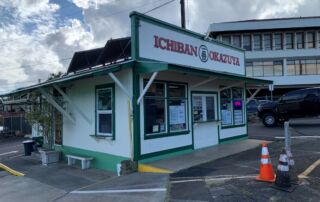Kāneiolouma Heiau Project will Revive Centuries of Hawaiian Heritage
In the heart of Kaua‘i’s sun-drenched south shore, a powerful transformation is unfolding—one that reconnects modern Hawai‘i with the sophisticated, sustainable lifeways of its ancestors. Hui Mālama O Kāneiolouma, a grassroots cultural stewardship organization, has launched an ambitious restoration of Kāneiolouma Heiau and its surrounding ancient village, using time-honored traditions to breathe life back into a sacred wahi pana (storied place). This milestone initiative focuses on two cornerstone efforts: rebuilding the interior heiau walls using the ancestral stone-stacking technique known as Uhau Humu Pōhaku, and simultaneously clearing decades of invasive species and debris from a centuries-old fishpond system that exemplifies sophisticated pre-European contact aquaculture systems. “I ka wā ma mua, ka wā ma hope. (The future is in the past.)” says Rupert Rowe, Po‘o and Executive Director of Hui Mālama O Kāneiolouma. Under the skilled guidance of master mason Peleke Flores, 20 new apprentices are learning to craft dry-stack stone walls without modern cement or machinery. Trained under the eminent Kumu Palani Sinenci, Flores ensures each stone placed follows traditional protocols, honoring both practice and place. Just steps away, a parallel effort is underway to clear decades of overgrowth and invasive species from the site’s historic fishponds—restoring a once-thriving aquaculture network nourished by the sacred spring of Waiohai. These ponds, dormant for generations, once channeled freshwater through taro lo‘i before feeding into the fishponds, forming a resilient food system rooted in reciprocity and deep ecological knowledge. Backed by $425,000 in state and private grants—including $400,000 from the State of Hawai‘i and $50,000 from Historic Hawai‘i Foundation funded through the Native Hawaiian Organization Stewardship Training Program—this work marks Phase III of a long-term vision to fully restore the 600-year-old Kāneiolouma village. Located near Po‘ipū [...]











